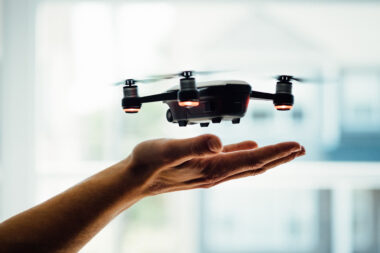In the ever-evolving landscape of cybersecurity, traditional methods of user identity verification are giving way to more advanced and secure technologies. Among these, biometric authentication stands out as a transformative approach, leveraging unique biological traits for identity verification. This article explores the recent advancements in biometric authentication technologies and their integration into software applications, shaping the future of secure and user-friendly identity verification.
The Evolution of Biometric Authentication:
Biometric authentication has come a long way from fingerprint scans and facial recognition. Today, it encompasses a diverse range of biological identifiers, including fingerprints, iris patterns, voiceprints, facial features, and even behavioral characteristics like typing patterns and gait. The richness of biometric data provides a multifaceted approach to user identity verification, enhancing security and reducing the reliance on traditional password-based methods.
Advancements in Biometric Technologies:
Facial Recognition:
Deep Learning Algorithms: The integration of deep learning algorithms has significantly enhanced the accuracy of facial recognition systems. These algorithms enable the extraction and analysis of intricate facial features, making recognition more robust across diverse lighting conditions and facial angles.
3D Face Recognition: Advancements in 3D facial recognition technology have overcome challenges posed by traditional 2D systems, providing more accurate and secure identification by capturing the spatial dimensions of the face.
Behavioral Biometrics:
Advanced Machine Learning Models: The use of advanced machine learning models has refined the analysis of behavioral biometrics, such as keystroke dynamics and mouse movement patterns. These models adapt over time, creating personalized baselines for individual users and enhancing the precision of identification.
Contextual Analysis: Behavioral biometrics systems now incorporate contextual analysis, considering factors like typing speed, mouse trajectory, and touchscreen interactions. This contextual understanding adds an extra layer of security by recognizing subtle variations in user behavior.
Palm Vein Recognition:
Contactless Authentication: Palm vein recognition systems offer a contactless approach to biometric authentication, eliminating the need for physical contact with sensors. This not only enhances user convenience but also reduces the risk of contamination in hygiene-sensitive environments.
Vein Pattern Matching Algorithms: Advanced algorithms for vein pattern matching contribute to the high accuracy of palm vein recognition. These algorithms analyze the unique vein patterns beneath the skin’s surface, making it difficult for unauthorized users to replicate.
DNA Biometrics:
Genetic Sequencing Technology: The advent of advanced genetic sequencing technologies has paved the way for DNA biometrics. While in early stages, this technology holds immense potential for providing the highest level of personal identification.
Privacy-Preserving Techniques: Researchers are actively exploring privacy-preserving techniques to ensure the secure storage and usage of genetic information. Techniques like homomorphic encryption allow for computations on encrypted DNA data without revealing sensitive details.
Integration into Software Applications:
Mobile Devices:
Multi-Modal Biometrics: Mobile devices now often employ multi-modal biometrics, combining fingerprint recognition, facial recognition, and even iris scanning for heightened security.
Secure Enclave Technology: The integration of secure enclave technology in mobile devices ensures that biometric data is stored and processed in a highly secure environment, minimizing the risk of unauthorized access.
Financial Transactions:
Biometric Cryptography: Biometric cryptography is gaining traction in securing financial transactions. Techniques like biometric tokenization ensure that sensitive biometric data is transformed into non-reversible tokens, adding an extra layer of protection.
Healthcare Systems:
Biometric Patient Identification: Healthcare systems are leveraging biometric authentication for secure patient identification, reducing the risk of medical identity theft.
Interoperability Standards: Standardization efforts are underway to establish interoperability standards for biometric data in healthcare, ensuring seamless integration across diverse systems.
Government Services:
National Identification Programs: Governments worldwide are incorporating biometric data into national identification programs, utilizing fingerprints, facial recognition, and iris scans for secure identity verification.
Secure Biometric Databases: Advanced encryption and hashing techniques are employed to secure biometric databases, protecting citizen data from unauthorized access.
Latest Manufacturing Techniques in Biometric Technologies:
3D Printing for Sensor Components:
Utilizing 3D printing technology to manufacture sensor components with intricate designs. This allows for the creation of customized and highly detailed sensor surfaces, improving the accuracy of fingerprint and palm vein recognition.
Nanotechnology in Sensor Fabrication:
Applying nanotechnology for the fabrication of biometric sensors. Nanoscale materials and structures enhance the sensitivity and efficiency of sensors, enabling the detection of finer details in fingerprint patterns or vein structures.
Flexible and Stretchable Electronics:
Incorporating flexible and stretchable electronics in the manufacturing of biometric devices. This facilitates the creation of wearable biometric sensors that conform to the contours of the skin, providing continuous monitoring without sacrificing accuracy.
Advanced Materials for Facial Recognition Cameras:
Implementing advanced materials, such as high-resolution graphene-based sensors, in the manufacturing of facial recognition cameras. These materials enhance the camera’s ability to capture detailed facial features and improve performance in various lighting conditions.
Biocompatible Materials for Implantable Biometrics:
Using biocompatible materials in the development of implantable biometric devices. This includes materials that are safe for long-term integration into the human body, enabling secure and continuous authentication.
Additive Manufacturing for Prototype Development:
Employing additive manufacturing (3D printing) for rapid prototyping of biometric devices. This accelerates the product development cycle, allowing for quicker iterations and improvements in sensor design and functionality.
Machine Learning-Optimized Manufacturing:
Implementing machine learning algorithms in the manufacturing process to optimize the production of biometric sensors. This includes adaptive manufacturing techniques that adjust parameters based on real-time feedback, improving efficiency and reducing errors.
Innovative Encapsulation Techniques:
Developing advanced encapsulation techniques to protect biometric sensors from environmental factors such as moisture and contaminants. This ensures the longevity and reliability of the sensors in various operating conditions.
Secure Element Integration:
Integrating secure elements into the manufacturing process to enhance the security of biometric data. Secure elements provide a protected environment for storing and processing sensitive information, reducing the risk of data breaches.
Multimodal Sensor Integration:
Incorporating multiple biometric sensors into a single device, creating multimodal biometric systems. This integration enhances accuracy and reliability by combining different biometric modalities, such as fingerprint and iris recognition.
Machine Vision for Quality Control:
Implementing machine vision systems for quality control during the manufacturing process. Automated visual inspection ensures that biometric devices meet strict quality standards, minimizing defects and enhancing overall performance.
Hybrid Sensor Technologies:
Developing hybrid sensor technologies that combine traditional biometric methods with emerging technologies. For example, combining fingerprint recognition with vein pattern analysis for more robust and secure authentication.
Hardware Components:
Biometric Sensors:
Fingerprint Scanners: Capture fingerprint impressions for fingerprint recognition.
Iris Scanners: Capture the unique patterns in the iris for iris recognition.
Facial Recognition Cameras: Capture facial features for facial recognition.
Vein Scanners: Capture vein patterns beneath the skin for palm or finger vein recognition.
Voice Recorders/Microphones: Capture vocal characteristics for voice recognition.
Behavioral Biometrics Sensors: Capture behavioral traits like keystroke dynamics or mouse movement patterns.
Biometric Hardware Controllers:
Biometric Processing Units: Specialized processors for fast and accurate biometric data processing.
Secure Elements: Dedicated hardware for storing and managing sensitive biometric templates securely.
Capture and Display Devices:
Touchscreens and Displays: Interface for user interaction and feedback during the biometric enrollment and verification process.
Biometric Capture Devices: Devices such as fingerprint scanners or cameras for capturing biometric data during enrollment.
Communication Interfaces:
USB, Bluetooth, or NFC Interfaces: Enable communication between biometric devices and the central processing unit.
Servers and Databases:
Database Servers: Store and manage biometric templates securely.
Application Servers: Handle the communication between the client devices and the biometric database.
Power Management Systems:
Power Supply Units: Provide the necessary power for biometric devices.
Battery Systems: For mobile or portable biometric devices.
Software Components:
Biometric Enrollment Software:
Capture Modules: Software for capturing and processing biometric data during the enrollment process.
Template Creation: Algorithms for creating a unique biometric template for each enrolled individual.
Biometric Matching Software:
Matching Algorithms: Advanced algorithms that compare live biometric data with stored templates for authentication.
Decision-Making Logic: Determines the level of similarity required for a successful match.
Device Drivers:
Biometric Device Drivers: Software that enables communication between the operating system and the biometric devices.
Middleware:
Biometric Middleware: Acts as an interface between the biometric hardware and the application software, facilitating data flow and communication.
Biometric Database Management Software:
Database Management Systems (DBMS): Manages the storage, retrieval, and indexing of biometric templates.
Encryption and Security Features: Ensures the secure storage of biometric data.
User Interface (UI) Software:
Enrollment UI: Guides users through the process of registering their biometric data.
Authentication UI: Provides feedback and guidance during the biometric authentication process.
Security and Encryption Software:
Encryption Algorithms: Protects biometric data during transmission and storage.
Access Control Software: Manages access to biometric data and system settings.
Logging and Auditing Software:
Audit Trail Systems: Log and record all biometric transactions for accountability and traceability.
Reporting Tools: Generate reports on system usage and performance.
Integration Software:
APIs (Application Programming Interfaces): Facilitate integration with other software systems, applications, or platforms.
SDKs (Software Development Kits): Tools for developers to integrate biometric functionality into custom applications.
Maintenance and Monitoring Software:
System Health Monitoring: Monitors the health and performance of biometric hardware and software components.
Software Updates and Patch Management: Ensures that the system is up-to-date with the latest security features and improvements.
Machine Learning and AI Algorithms:
Behavioral Analysis Algorithms: Analyze and adapt to changes in behavioral biometric patterns.
Continuous Improvement Algorithms: Enhance biometric matching accuracy over time through machine learning.
Benefits of Biometric Authentication:
1. Enhanced Security: Biometric identifiers are unique to individuals, making it significantly harder for unauthorized users to gain access.
2. User-Friendly Experience: Biometric authentication eliminates the need for remembering complex passwords, providing a seamless and convenient user experience.
3. Reduced Fraud: With advanced anti-spoofing technologies, the risk of fraudulent attempts to mimic biometric traits is minimized.
4. Multi-Factor Authentication: Biometrics can be seamlessly integrated into multi-factor authentication systems, adding an extra layer of security.
Challenges and Future Outlook:
While biometric authentication offers significant advantages, challenges such as privacy concerns, potential biases, and the risk of data breaches must be addressed. Ongoing research is focused on enhancing the security and inclusivity of biometric systems, ensuring they remain at the forefront of identity verification technologies.
Biometric authentication is not just a technological advancement; it represents a paradigm shift in how we verify and secure user identities. As biometric technologies continue to evolve and integrate into various software applications, they hold the promise of providing a secure, user-friendly, and efficient means of identity verification, shaping the future of cybersecurity in the digital age.



